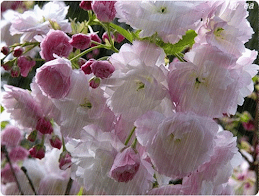By Sumiko Tan, The Straits Times, Sunday, 19 July 2015
PHOTO: My first brush with death was when my grandfather died of a heart attack when I was five. I didn't understand what his dying meant. I don't think I even cried. I just remember the commotion when he died and thinking how exciting it was that the whole clan was gathering.
https://blogger.googleusercontent.com/img/b/R29vZ2xl/AVvXsEhGlyCAgyWxHDWDgb_l2zZGLJ8BdvIm4dGYIphPUi6woiw_AoNdGlO6k7UDxJohXjhfiQ0YZTUzDthFCisToU7BJE5dMdKWHsckTIG48kASTfc_-eamKvs3EotAP_7JxgrbV8UOb4VskPk/s1600/20140719_Sumiko_st.jpg
http://news.asiaone.com/sites/default/files/styles/w848/public/original_images/Jul2015/20140719_Sumiko_st.jpg?itok=kuYiFpMB
http://news.asiaone.com/news/lifestyle/birth-life-and-death-sumiko-tan
It was a week like no other week.
I spent Monday, Tuesday and Wednesday nights at the wake of a friend who had died on Sunday. On Thursday morning, I went to his funeral.
On Friday night, I attended the wake of a former colleague's mother who had died earlier that week.
On Saturday morning, I went to the wake of an uncle who had passed on the day before.
It was perhaps little wonder that when Sunday came, I had a bad bout of the Sunday evening blues.
I've always felt out of sorts on Sunday nights. The world just seems gloomier, the air heavier and the night drearier than any other night of the week, only this time, it was worse. I felt suffocated.
Let's go for a walk and get dinner, He said.
No, I told him, I'm really not in the mood. I'm exhausted. I just want to curl up and sleep.
I'd known my friend since we were little. He was my oldest friend. We got along well and although we didn't meet that much, we wished the best for each other. His passing from brain cancer was not unexpected, but the timing came as a shock to me.
He had turned 53 the day before he died. A few of us had gathered at the nursing home he was in to have lunch and to cut his birthday cake. He couldn't eat. He was conscious but did not seem aware of us. It was a bittersweet visit and 12 hours later, he was gone.
My friend's mother had died unexpectedly after a short sickness and my uncle had been ill for three years.I'm at the age when wakes and funerals will become a common occurrence and I've got to brace myself for it.
My first brush with death was when my grandfather died of a heart attack when I was five.
He was a stout and handsome Teochew man who liked his food and liked to cook. He had a row of Ribena bottles in his room, filled with tasty, roasted, salted peanuts which he'd pour onto my palms.
We were living with him and he was fond of me. Every time my mother caned me, I'd go running to him and he'd scoop me up in his arms to protect me.
He slept on a green canvas bed supported by wooden poles. Whenever there was a thunderstorm, I'd go and sleep with him, back to back, our spines touching.
I didn't understand what his dying meant. I don't think I even cried. I just remember the commotion when he died and thinking how exciting it was that the whole clan was gathering.
Later, I was dressed in sackcloth like everyone else and we had to walk over a bridge and toss coins into a bucket during the wake.
When I was in my teens, a friend died in a road accident. That was the first time I realised what death meant.
It was bizarre how someone could be there one day, alive and full of quirks, and in the next second, be gone forever, and even more amazing was how he was my age.
When I became a journalist, I was on the crime beat for two years and had more encounters with death than most people would.
One of our duties was to visit the Singapore General Hospital mortuary every morning to see if there were unusual deaths we could report on.
The first time I was there, the body of a man was inside. Word was he had killed himself using a metal dog chain.
Another time, I had to interview the father of a boy who had committed suicide.
I still have a picture of the scene in my head - dusk was falling when the father came back from work. He had a weary look on his weather- beaten face. We stood outside his flat by the parapet.
"I forgive him," he said about his son.
The Hotel New World collapse in 1986 where 33 people died was the first large-scale tragedy I covered.
The scenes of despair as bodies were pulled out and the sweet, syrupy smell of death haunted me for a long time.
Over the years, there have been other deaths, of loved ones and acquaintances, and of strangers whose passing also affected me.
The death two years ago of the Singaporean man, his Korean girlfriend and her parents in an accident along the Central Expressway pained me for days.
As I age, I've become more and more aware that it won't be too long before I, too, will be gone.
Death is an ever-present fear for most people and in a Ted Talk, British author Stephen Cave describes it aptly: "We each live in the shadow of a personal apocalypse. And that's frightening. It's terrifying. And so we look for a way out."
Cave, who wrote a book called Immortality: The Quest To Live Forever And How It Drives Civilization, says that to cope with the terror of death, people from across cultures and over the ages have relied on four basic "immortality" stories.
The first is the elixir story, where we go in search of something that will make us live forever. It used to be the mythical fountain of youth. Today, we're talking stem-cell therapy and genetic engineering.
But we all know everyone will die and so there is a second concept we clutch at, says Cave - the resurrection story, where the idea is that while we will die, our bodies will rise and live again one day.
Others, however, believe in the soul story, which is the idea that we will leave our physical body behind, but we will live on as a soul.
Finally, there is the legacy story, which is the belief that you can live on through the echo you leave in the world, whether through your children or some form of legacy.
To say that the week that passed was sobering would be an understatement. It drew home to me how fragile life is and also just how plain horrible it is when someone you love dies.
What helped heal the pain were the rituals. The wakes and funerals allowed family and friends to come together to acknowledge the reality of the death, which was important. They also allowed us to remember the life of the person who died, to grieve and to support one another in that grief.
Death leaves a heartache that takes time to heal. Years can pass and you think you have moved on, but the pain can suddenly hit you again. I've been there.
At the funeral of my friend, one of his good friends gave a eulogy in which he recounted how a nun who was also a nurse asked a group of doctors and nurses this question: What is the opposite of death? Someone said it was life. But no, the nun said.
The opposite of death is birth, and what lies between is life.
My friend's death is mourned and we will miss him a lot. But he had lived a good and a full life, loved by many and there is some comfort in that.
This article was first published on July 19, 2015.
Get a copy of The Straits Times or go to straitstimes.com for more stories.

PHOTO: Collectors snap up works by Singapore artists
A life-like sculpture made of silicone by Sam Jinks from Melbourne drew curious onlookers at Art Stage Singapore.
Photo Source: The Straits Times, Fost Gallery
https://blogger.googleusercontent.com/img/b/R29vZ2xl/AVvXsEgyFDIcToS-fp2Da_Jwdu-34UV7vid7wOmqEPdgxTWwOtxldr6vIT6wwUKu8YeaUheN0yJsrY3C3D-Fjsbsgaux4WiAxIjVqyM6q14KrFQ1VXi4yOxTzCsy7ZGcmv01otwaqwNol0RkM6o/s1600/localart_26_0.jpg
http://news.asiaone.com/sites/default/files/styles/w641/public/original_images/Jan2015/localart_26_0.jpg?itok=KQM1f7Yn
http://news.asiaone.com/news/singapore/collectors-snap-works-singapore-artists

PHOTO: Singapore’s first mermaid
National University of Singapore student Cara Nicole Neo, 21, is that mermaid. The English Literature student, who also goes by her alter ego “mermaid Syrena”, started moonlighting as a half-woman, half-fish in July this year (2013).
Posted by Luna Pham, Singapore Showbiz on Wednesday, 11 September 2013 at 1:10 PM SGT
https://blogger.googleusercontent.com/img/b/R29vZ2xl/AVvXsEjk-ieOZ6HPxxcHJABhgLwamaTmI8G6qRaSXLo3zD2yKFVyJCB2rQDPi8TmzUBhj6QG0Al_fdVUQBSCLwg_FEoMmEPsXKQkrU1x2NO741Bb_3fyuC6YDAdSCSOnQfEq0L-c_y0UHq7umBE/s1600/mermaids_cara.jpg
https://s1.yimg.com/bt/api/res/1.2/LLj7JDoPhGDj2GgTuwI0.A--/YXBwaWQ9eW5ld3M7cT04NQ--/http://media.zenfs.com/en-SG/blogs/singaporeshowbiz/mermaids_cara.jpg
https://sg.entertainment.yahoo.com/blogs/singapore-showbiz/mermaid-series-part-1-why-world-going-crazy-051022676.html
Reference
- https://blogger.googleusercontent.com/img/b/R29vZ2xl/AVvXsEhGlyCAgyWxHDWDgb_l2zZGLJ8BdvIm4dGYIphPUi6woiw_AoNdGlO6k7UDxJohXjhfiQ0YZTUzDthFCisToU7BJE5dMdKWHsckTIG48kASTfc_-eamKvs3EotAP_7JxgrbV8UOb4VskPk/s1600/20140719_Sumiko_st.jpg
- http://news.asiaone.com/sites/default/files/styles/w848/public/original_images/Jul2015/20140719_Sumiko_st.jpg?itok=kuYiFpMB
- http://news.asiaone.com/news/lifestyle/birth-life-and-death-sumiko-tan
- https://blogger.googleusercontent.com/img/b/R29vZ2xl/AVvXsEgyFDIcToS-fp2Da_Jwdu-34UV7vid7wOmqEPdgxTWwOtxldr6vIT6wwUKu8YeaUheN0yJsrY3C3D-Fjsbsgaux4WiAxIjVqyM6q14KrFQ1VXi4yOxTzCsy7ZGcmv01otwaqwNol0RkM6o/s1600/localart_26_0.jpg
- http://news.asiaone.com/sites/default/files/styles/w641/public/original_images/Jan2015/localart_26_0.jpg?itok=KQM1f7Yn
- http://news.asiaone.com/news/singapore/collectors-snap-works-singapore-artists
- https://blogger.googleusercontent.com/img/b/R29vZ2xl/AVvXsEjk-ieOZ6HPxxcHJABhgLwamaTmI8G6qRaSXLo3zD2yKFVyJCB2rQDPi8TmzUBhj6QG0Al_fdVUQBSCLwg_FEoMmEPsXKQkrU1x2NO741Bb_3fyuC6YDAdSCSOnQfEq0L-c_y0UHq7umBE/s1600/mermaids_cara.jpg
- https://s1.yimg.com/bt/api/res/1.2/LLj7JDoPhGDj2GgTuwI0.A--/YXBwaWQ9eW5ld3M7cT04NQ--/http://media.zenfs.com/en-SG/blogs/singaporeshowbiz/mermaids_cara.jpg
- https://sg.entertainment.yahoo.com/blogs/singapore-showbiz/mermaid-series-part-1-why-world-going-crazy-051022676.html










































.jpg)
.gif)
.jpg)




















































%20-%20%E5%82%B7%E5%BF%83%E7%9A%84%E8%B7%AF%20(Sh%C4%81ng%20x%C4%ABn%20de%20l%C3%B9)%20-%20The%20Road%20of%20Sorrow%20(With%20Subtitle)_11.png)


